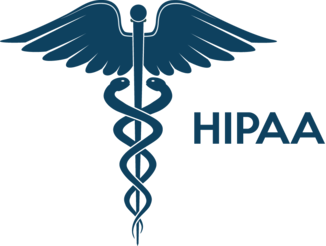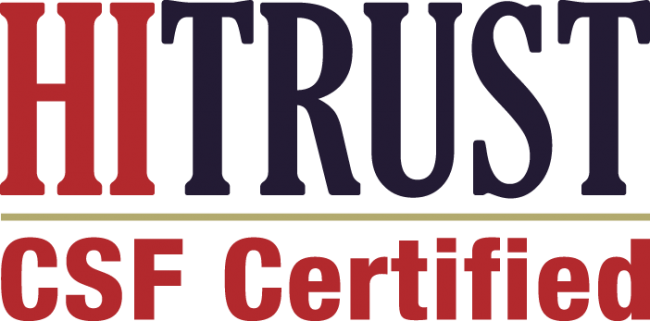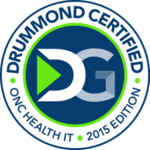Healthcare interoperability is the ability of different healthcare information systems to communicate, exchange, and use data seamlessly, which has become a critical imperative for modern healthcare organizations. As the industry continues its digital transformation, the question isn’t whether your organization needs interoperability, but rather, how ready are you to achieve it effectively?
The Current State of US Healthcare Data Interoperability
The United States healthcare system faces significant interoperability challenges that directly impact patient care quality, operational efficiency, and healthcare costs. Understanding these challenges is essential for any organization embarking on an interoperability journey.
Key Statistics and Challenges
Fragmentation Crisis: The US healthcare system operates with over 6,000 hospitals and 230,000 physician practices, many using different electronic health record (EHR) systems that don’t communicate effectively with each other. This fragmentation creates information silos that can compromise patient safety and care coordination.
Financial Impact: Healthcare organizations lose an estimated $8.3 billion annually due to poor interoperability, according to recent industry analyses. These losses stem from duplicate testing, medical errors, administrative inefficiencies, and delayed care decisions caused by inaccessible patient data.
Patient Safety Concerns: Studies indicate that 25% of medical errors in hospitals are attributed to communication failures, many of which could be prevented with better data interoperability. When critical patient information isn’t readily available across care settings, the risk of adverse events increases significantly.
Administrative Burden: Healthcare providers spend approximately 16% of their time on administrative tasks related to data collection and management that could be automated through better interoperability. This time could be redirected to direct patient care activities.
Information Blocking: Despite federal regulations, information blocking remains a persistent issue. The Office of the National Coordinator for Health Information Technology (ONC) continues to identify instances where healthcare organizations or technology vendors restrict access to electronic health information.
Understanding Interoperability Maturity Levels
Before conducting a readiness assessment, organizations must understand the four levels of healthcare interoperability:
Level 1: Foundational Interoperability
This basic level allows data exchange between systems but doesn’t require the receiving system to interpret the data. It’s essentially the ability to send and receive information, similar to email functionality.
Level 2: Structural Interoperability
At this level, data formats and standards are defined, enabling systems to exchange and store data consistently. This includes using standardized data formats like HL7 FHIR (Fast Healthcare Interoperability Resources).
Level 3: Semantic Interoperability
This advanced level ensures that exchanged information has the same meaning across different systems. It involves standardized vocabularies, coding systems, and data definitions that enable true understanding between systems.
Level 4: Organizational Interoperability
The highest level encompasses governance, policy, and workflow considerations that enable seamless data exchange across different organizations, care settings, and even geographic boundaries.
Comprehensive Readiness Assessment Framework
Technical Infrastructure Assessment
EHR System Evaluation: Begin by cataloging your current EHR systems and their interoperability capabilities. Key questions include: Does your EHR support modern standards like HL7 FHIR R4? Can it participate in health information exchanges? What APIs are available for third-party integrations?
Network Infrastructure: Assess your organization’s network capacity, security protocols, and cloud readiness. Interoperability often requires robust, secure connections that can handle increased data traffic while maintaining HIPAA compliance.
Data Architecture Review: Examine how data is currently stored, organized, and accessed within your organization. Identify data silos, redundancies, and gaps that could impede interoperability efforts.
Integration Capabilities: Evaluate existing integration platforms, middleware solutions, and API management capabilities. Modern interoperability often requires sophisticated integration architectures that can handle multiple data formats and protocols.
Organizational Readiness Factors
Leadership Commitment: Successful interoperability initiatives require strong executive sponsorship and sustained organizational commitment. Assess whether leadership understands the strategic importance of interoperability and is prepared to invest necessary resources.
Change Management Capacity: Interoperability implementation often requires significant workflow changes. Evaluate your organization’s change management capabilities, including communication strategies, training programs, and user adoption approaches.
Financial Resources: Determine the available budget for interoperability initiatives, including technology investments, consulting services, ongoing maintenance, and staff training. Consider both immediate costs and long-term sustainability requirements.
Staffing and Expertise: Assess current IT staffing levels and expertise in areas such as health informatics, system integration, data management, and cybersecurity. Identify skill gaps that may require hiring or training investments.
Regulatory and Compliance Preparedness
HITECH Act Compliance: Ensure your organization understands and complies with Health Information Technology for Economic and Clinical Health Act requirements, particularly regarding meaningful use criteria and interoperability standards.
21st Century Cures Act: Assess compliance with information blocking provisions and patient access requirements mandated by this landmark legislation. Organizations must demonstrate that they’re not restricting health information access inappropriately.
State and Local Regulations: Review applicable state privacy laws, health information exchange requirements, and local regulatory considerations that may impact interoperability efforts.
Privacy and Security Frameworks: Evaluate current HIPAA compliance programs and assess readiness to handle increased data sharing while maintaining patient privacy and data security.
Data Governance and Quality Assessment
Data Standardization: Review current use of healthcare data standards such as SNOMED CT, ICD-10, LOINC, and RxNorm. Assess data quality, completeness, and consistency across different systems and departments.
Master Data Management: Evaluate patient identity management capabilities, including patient matching algorithms and duplicate record resolution processes. Poor master data management is a significant barrier to effective interoperability.
Data Quality Programs: Assess existing data quality initiatives, including data validation processes, error correction procedures, and ongoing data governance activities.
Information Governance: Review policies and procedures for data sharing, access controls, audit trails, and data retention. Strong information governance is essential for successful interoperability.
Strategic Planning Considerations
Stakeholder Engagement Strategy
Successful interoperability initiatives require engagement from multiple stakeholder groups, including clinicians, IT staff, administrative personnel, and external partners such as health information exchanges and trading partners.
Clinical Champion Development: Identify and engage clinical leaders who can advocate for interoperability benefits and help drive user adoption. These champions should understand both clinical workflows and technology capabilities.
External Partnership Assessment: Evaluate relationships with health information exchanges, ACOs, payer networks, and other healthcare organizations. Strong partnerships are often essential for achieving meaningful interoperability.
Phased Implementation Approach
Rather than attempting organization-wide interoperability simultaneously, successful organizations typically adopt phased approaches that build capabilities incrementally.
Priority Use Cases: Identify high-impact use cases such as care transitions, medication reconciliation, or chronic disease management that could benefit immediately from improved interoperability.
Pilot Program Development: Design pilot programs that can demonstrate interoperability value while minimizing risk and resource requirements. Successful pilots can build momentum for broader initiatives.
Scalability Planning: Ensure that initial interoperability investments can be scaled across the organization and extended to additional use cases over time.
Measuring Readiness and Creating Action Plans
Assessment Scoring Methodology
Develop a comprehensive scoring system that evaluates your organization across multiple dimensions of interoperability readiness. Consider using weighted scoring that reflects the relative importance of different factors for your specific organizational context.
Technical Readiness Score: Evaluate infrastructure, systems capabilities, and integration readiness on a scale that reflects current state and required investments.
Organizational Readiness Score: Assess leadership support, change management capacity, financial resources, and staffing adequacy.
Compliance Readiness Score: Review regulatory compliance status and ability to meet current and future interoperability requirements.
Operational Readiness Score: Evaluate workflow integration capabilities, user training programs, and ongoing support structures.
Gap Analysis and Prioritization
Once assessment results are available, conduct thorough gap analyses that identify specific areas requiring attention. Prioritize gaps based on factors such as regulatory requirements, patient safety implications, financial impact, and implementation complexity.
Critical Gaps: Address gaps that pose immediate risks to patient safety, regulatory compliance, or organizational operations.
Strategic Gaps: Focus on gaps that align with broader organizational strategic objectives and can deliver significant long-term value.
Foundational Gaps: Identify infrastructure or capability gaps that must be addressed before more advanced interoperability initiatives can succeed.
Action Plan Development
Create detailed action plans that address identified gaps through specific initiatives, timelines, resource requirements, and success metrics.
Short-term Actions (3-6 months): Focus on immediate needs such as policy updates, staff training, or minor system configurations that can improve current interoperability capabilities.
Medium-term Actions (6-18 months): Address more complex initiatives such as system upgrades, integration projects, or organizational restructuring efforts.
Long-term Actions (18+ months): Plan for major technology investments, comprehensive workflow redesigns, or strategic partnerships that will position the organization for advanced interoperability.
HealthViewX HealthBridge Interoperability Engine: A Comprehensive Solution
As healthcare organizations navigate the complex landscape of interoperability readiness, selecting the right technology platform becomes crucial for success. The HealthViewX HealthBridge Interoperability Engine represents a comprehensive solution designed to address many of the challenges identified in interoperability readiness assessments.
Platform Overview and Capabilities
Standards-Based Architecture: HealthBridge is built on modern interoperability standards, including HL7 FHIR R4, ensuring compliance with federal requirements and future-proofing organizational investments. The platform supports multiple data exchange protocols, including HL7 v2.x, CDA, and emerging FHIR specifications, providing flexibility for diverse healthcare environments.
Cloud-Native Design: The platform’s cloud-native architecture addresses many infrastructure readiness challenges by providing scalable, secure, and maintainable interoperability capabilities without requiring extensive on-premises hardware investments. This approach reduces the technical infrastructure burden identified in many readiness assessments.
API-First Approach: HealthBridge’s comprehensive API management capabilities enable organizations to expose and consume healthcare data through standardized interfaces, supporting the API economy trends discussed in future-proofing strategies.
Addressing Common Readiness Assessment Gaps
Integration Complexity: Many organizations struggle with the technical complexity of connecting disparate healthcare systems. HealthBridge provides pre-built connectors and integration templates for major EHR systems, reducing implementation time and technical risk.
Data Quality and Standardization: The platform includes robust data transformation and normalization capabilities that address common data quality challenges identified in readiness assessments. Built-in validation rules and error-handling mechanisms ensure data integrity during exchange processes.
Regulatory Compliance: HealthBridge incorporates privacy and security controls designed to support HIPAA compliance, 21st Century Cures Act requirements, and information blocking prevention. Comprehensive audit trails and access controls help organizations meet regulatory obligations identified in compliance readiness assessments.
Scalability Concerns: Organizations often worry about scaling interoperability solutions across multiple departments and use cases. HealthBridge’s modular architecture allows for phased implementations that can start with pilot programs and expand systematically based on readiness assessment recommendations.
Strategic Alignment with Readiness Assessment Results
Technical Infrastructure: For organizations with limited technical infrastructure, HealthBridge’s cloud-based deployment model reduces the infrastructure investment typically required for comprehensive interoperability. This addresses a common gap identified in technical readiness assessments.
Organizational Change Management: The platform includes workflow integration tools and user-friendly interfaces that minimize the organizational disruption often associated with interoperability implementations. This supports organizations with limited change management capacity.
Resource Optimization: By providing a comprehensive platform rather than requiring organizations to integrate multiple point solutions, HealthBridge addresses the staffing and expertise gaps commonly identified in readiness assessments.
Real-World Implementation Benefits
Accelerated Time to Value: Organizations using HealthBridge typically achieve interoperability benefits more quickly than those building custom solutions, addressing the urgency often identified in readiness assessments related to regulatory compliance and competitive pressures.
Reduced Total Cost of Ownership: The platform’s comprehensive feature set and managed service options can reduce the long-term costs associated with maintaining multiple interoperability solutions, addressing financial readiness concerns.
Enhanced Care Coordination: HealthBridge enables the seamless data exchange necessary for improved care transitions, medication reconciliation, and population health management—key use cases identified in strategic interoperability planning.
Integration with Assessment Methodology
When conducting interoperability readiness assessments, organizations should evaluate how platforms like HealthBridge align with their specific needs and gaps. Key evaluation criteria include:
Gap Remediation Capability: Assess how well the platform addresses specific gaps identified in your readiness assessment, particularly in areas of technical infrastructure, data quality, and regulatory compliance.
Implementation Complexity: Consider how the platform’s implementation requirements align with your organization’s change management capacity and technical expertise levels identified in the assessment.
Scalability Alignment: Evaluate whether the platform’s growth capabilities match your organization’s long-term interoperability objectives and phased implementation plans.
Vendor Partnership: Assess the vendor’s ability to provide ongoing support, consultation, and strategic guidance as your organization’s interoperability maturity evolves beyond the initial assessment phase.
Implementation Best Practices
Technology Selection Criteria
When selecting interoperability technologies, prioritize solutions that support industry standards, offer robust security features, provide scalable architectures, and include comprehensive vendor support. Platforms like HealthViewX HealthBridge demonstrate how comprehensive interoperability engines can address multiple readiness assessment gaps simultaneously while providing a foundation for long-term growth.
Standards Compliance: Ensure selected technologies support current interoperability standards and are positioned to evolve with emerging requirements.
Vendor Stability: Evaluate vendor financial stability, market position, and commitment to ongoing product development and support.
Integration Capabilities: Assess how well potential solutions integrate with existing systems and future technology investments.
Risk Mitigation Strategies
Interoperability initiatives involve multiple types of risks that must be carefully managed throughout implementation.
Technical Risks: Address potential system integration failures, data quality issues, and performance problems through comprehensive testing, backup systems, and rollback procedures.
Operational Risks: Mitigate workflow disruptions through careful change management, user training, and phased implementations that allow for adjustments based on user feedback.
Compliance Risks: Ensure ongoing compliance with privacy regulations, security requirements, and interoperability mandates through regular audits and compliance monitoring.
Future-Proofing Your Interoperability Strategy
Emerging Technology Considerations
The healthcare interoperability landscape continues to evolve rapidly, with new technologies and standards emerging regularly. Organizations must consider how current investments will adapt to future requirements.
FHIR Evolution: Stay current with HL7 FHIR developments and ensure your interoperability strategy can accommodate new versions and capabilities.
API Economy: Prepare for increased reliance on APIs for healthcare data exchange and ensure your infrastructure can support API-based interoperability models.
Cloud Computing: Consider how cloud-based interoperability solutions might offer advantages in terms of scalability, cost-effectiveness, and maintenance requirements.
Continuous Improvement Framework
Establish ongoing processes for monitoring interoperability performance, identifying improvement opportunities, and adapting to changing requirements.
Performance Monitoring: Implement metrics and monitoring systems that track interoperability effectiveness, user satisfaction, and business impact.
Feedback Mechanisms: Create channels for collecting and acting on feedback from clinicians, staff, and patients regarding interoperability experiences.
Technology Refresh Planning: Develop processes for evaluating and implementing technology updates, upgrades, and replacements as the interoperability landscape evolves.
Conclusion
Healthcare interoperability readiness assessment is not a one-time activity but rather an ongoing process that requires sustained attention, investment, and commitment. Organizations that approach interoperability strategically with thorough assessment, careful planning, and systematic implementation are more likely to achieve meaningful benefits, including improved patient outcomes, reduced costs, and enhanced operational efficiency.
The current state of US healthcare data interoperability presents both challenges and opportunities. While significant barriers remain, federal regulations, industry standards development, and technological advances are creating a more favorable environment for organizations ready to invest in interoperability capabilities.
Success in healthcare interoperability requires more than just technology implementation. It demands organizational transformation that encompasses culture change, process redesign, and ongoing commitment to data sharing and collaboration. Organizations that recognize interoperability as a strategic imperative and invest accordingly will be better positioned to thrive in an increasingly connected healthcare ecosystem.
By conducting comprehensive readiness assessments and developing thoughtful implementation strategies, healthcare organizations can move beyond the question of whether they’re ready for interoperability to focus on how they can achieve it most effectively. The journey toward seamless healthcare data exchange is complex, but the potential benefits for patients, providers, and the broader healthcare system make it an essential undertaking for forward-thinking healthcare organizations.






